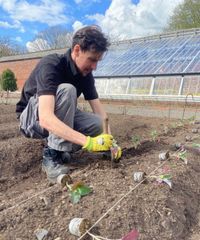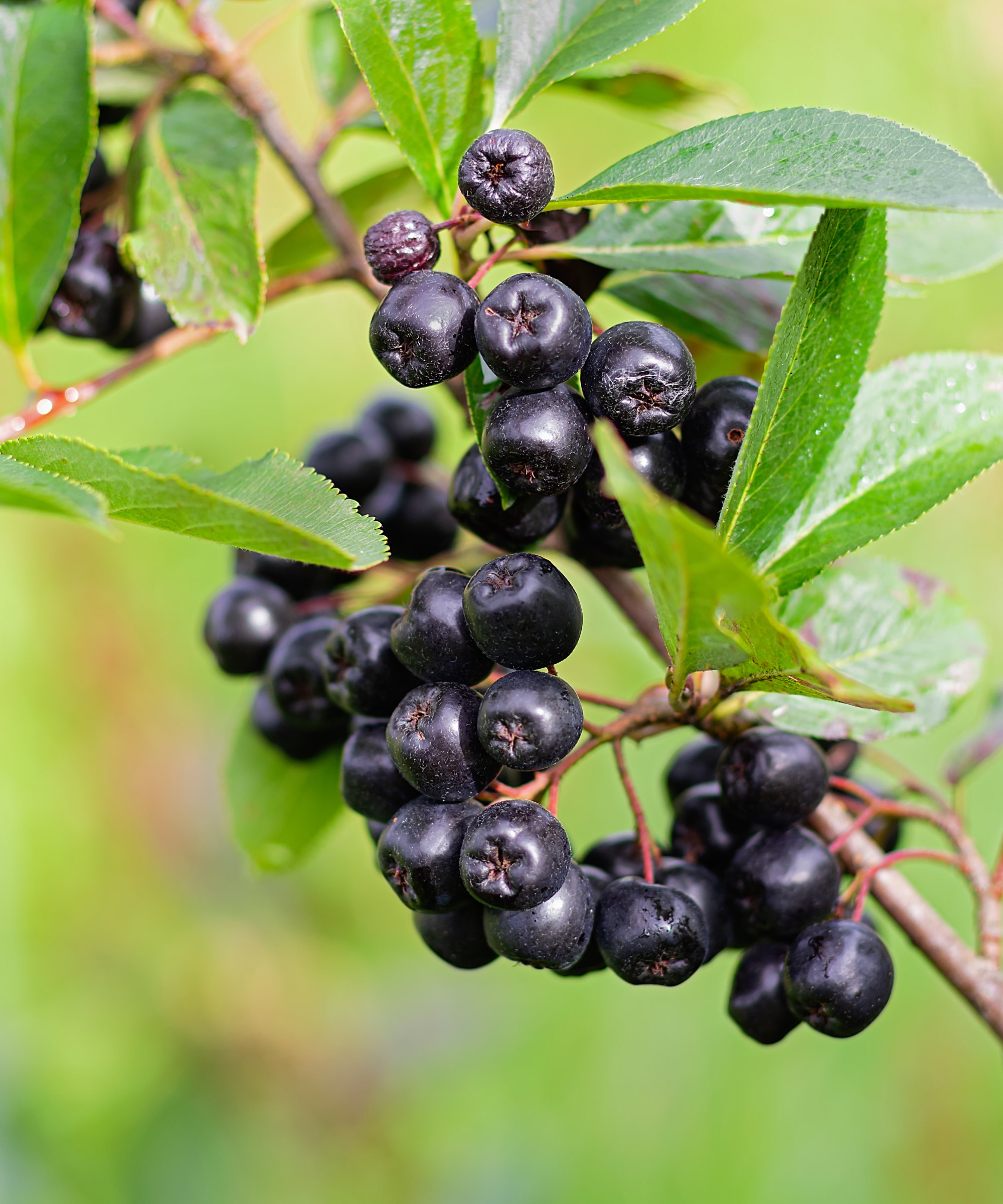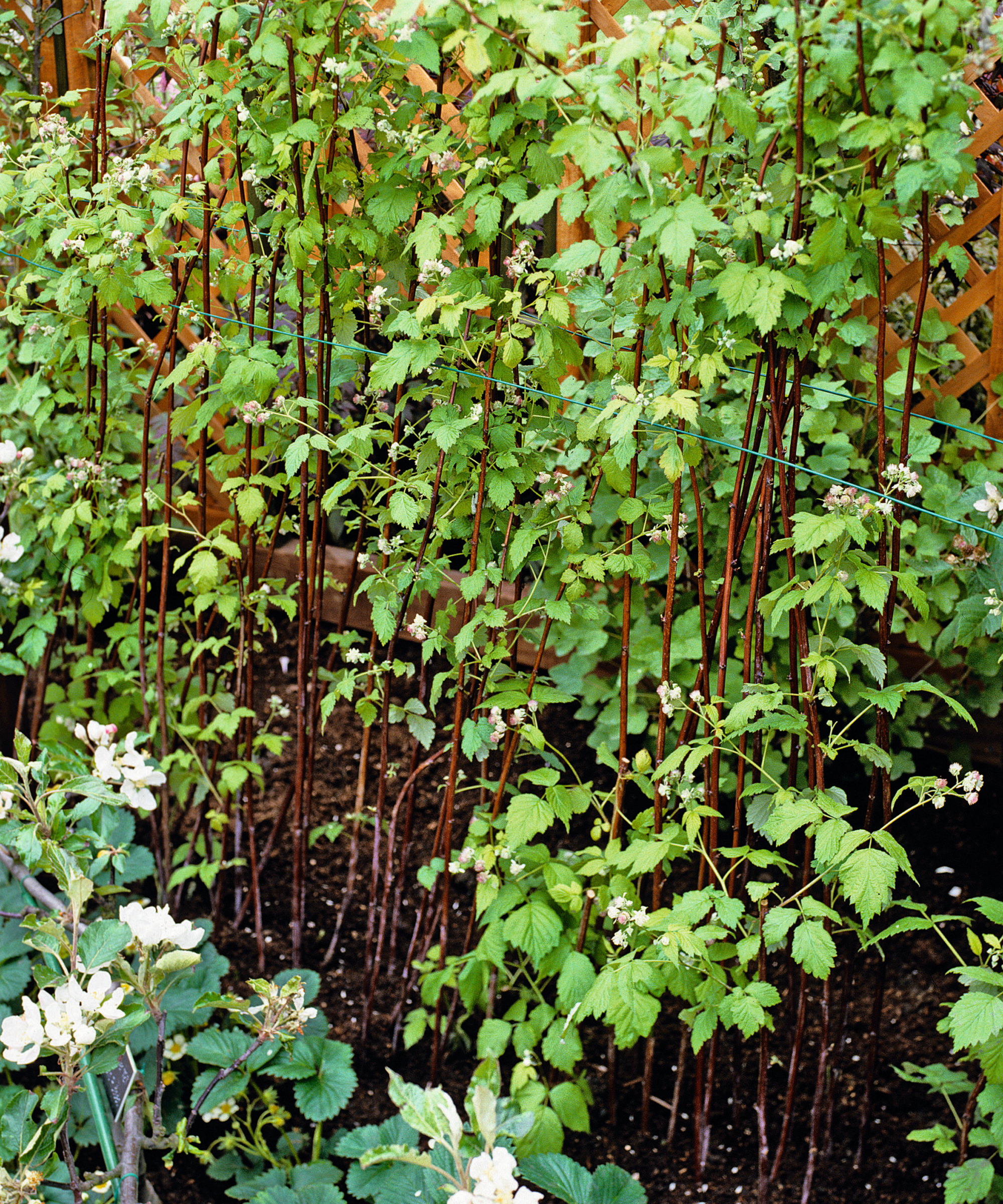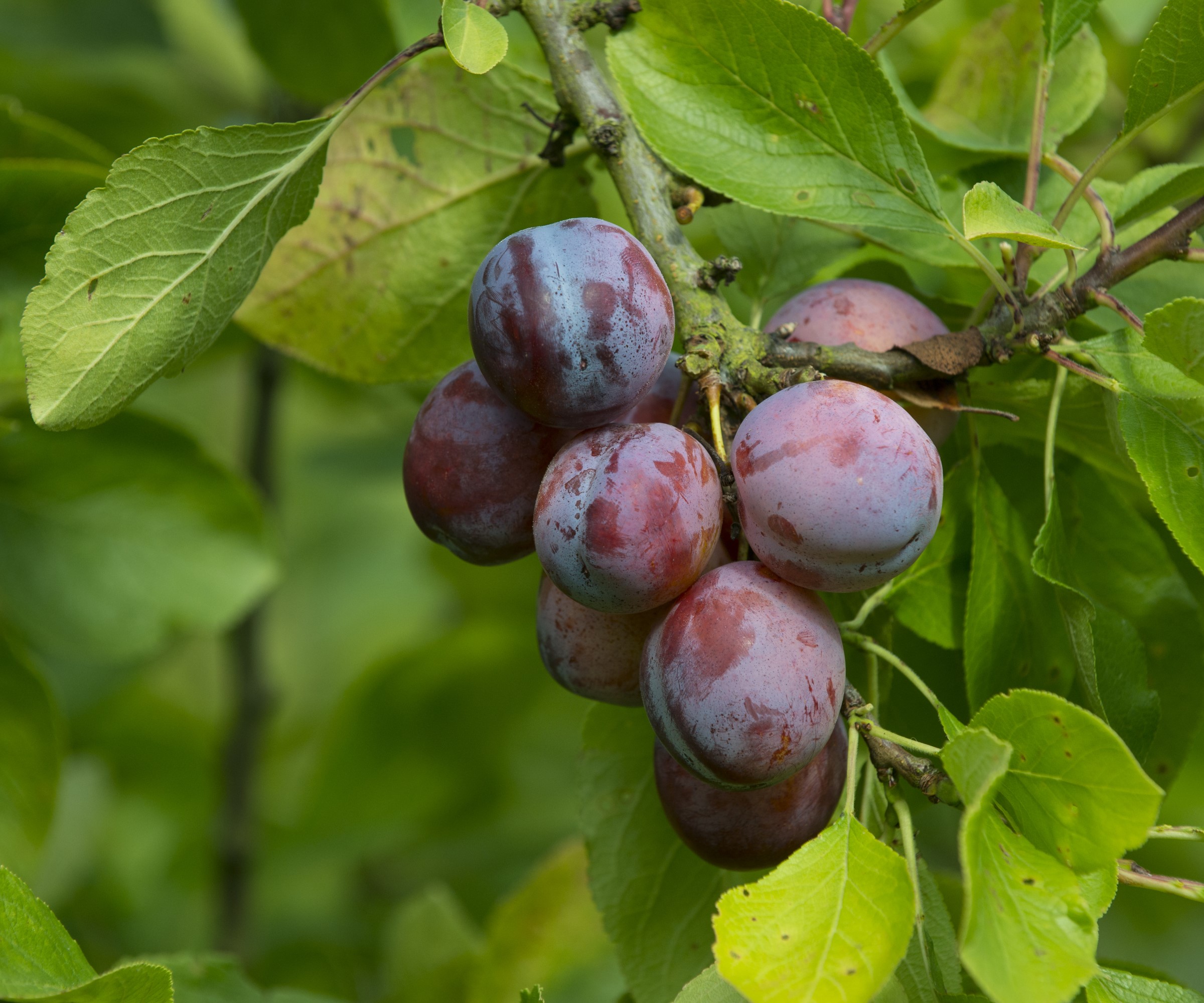Join the Spend-Savvy Gardeners Planting Bare-Root Fruit This Month – 7 Types to Plant in November
Plant this month and get bountiful harvests for years to come


Bare-root fruit starts becoming available for gardeners to plant in November. These dormant plants offer a more budget-friendly way to add fruit to your garden than buying pricier container-grown ones.
Whether you want to grow fruit trees or soft fruit bushes, both can be sourced as bare-root plants to add to your garden this month. Bare-root plants can be planted anytime from November to March, as long as the ground isn't frozen or waterlogged. They arrive without soil around the roots, and ideally, they want to be planted right away.
I have taken advantage of the cost-effectiveness of bare-root fruit over the years. I’ve bought and planted bare-root fruit trees and bushes in gardens I worked in, or in my growing plot at home. They always offer great value and are easy to deal with, so I want to take this opportunity to highlight some of my best fruits to plant in November.

7 fruits to plant in November
Late fall and early winter can be a potentially busy time when growing fruit. We have mentioned already that it is a perfect time for planting, but the window to prune apples, pears, quince, medlars, grapes, and currants also opens. There is no rush, though, as you have until late winter to do your fruit tree pruning, but the above are all jobs to consider adding to your fall gardening checklist.
1. Blueberries

- Hardiness - Zones 4-9 (depending on variety)
- Location - Sunny and sheltered
- Fruits - Midsummer to early fall
Blueberries are stunning plants that produce tasty berries packed with vitamins and antioxidants. They are native plants to the US, with varieties of blueberries suited to different climates from US hardiness zone 4 to 9.
The two main types are the northern highbush (Vaccinium corymbosum), suited for colder climates and by far the most common type of blueberries for home growers, and the lowbush blueberry (Vaccinium angustifolium), more commonly seen in the wild or on farms. Some blueberry varieties are self-fertile, but all will do better with a partner plant.
The best time to plant blueberries is in the fall or early spring. You can get container-grown and bare-root blueberries in the fall to plant in a sunny and sheltered area of the yard. They prefer moist soil types and a more acidic soil pH.
Design expertise in your inbox – from inspiring decorating ideas and beautiful celebrity homes to practical gardening advice and shopping round-ups.
To create a perfect environment for growing blueberries, test your soil beforehand. You can incorporate some ericaceous compost into beds or grow blueberries in pots filled with a compost for acid-loving plants.
You can get bare-root highbush blueberry plants at Amazon to plant this month.
Shop the range of blueberry plants at Amazon
Shop the range of blueberry plants at Walmart
Shop the range of blueberry plants at Burpee
Shop the range of blueberry plants at Nature Hills
2. Gooseberries

- Hardiness - Zones 3-8
- Location - Sunny
- Fruits - Mid-to-late-summer
Gooseberries are renowned for their heavy crops of tangy fruits for use in sweet and savory dishes. The fruits tend to be green or red, with the edible berries typically classified as culinary, dessert or dual-purpose.
The good news is that gooseberries are self-fertile, so you can get a harvest with just one bush, though any yield will improve with multiple plants.
You can grow gooseberries as standard bushes, or they can be trained to grow against walls for harvests in smaller spaces. Plant them in fall or spring in a sunny, sheltered spot, though gooseberries can grow in shade.
They like moist, well-draining soil, and bushes should be at least 6-8 feet apart. It would be a gooseberry growing mistake to crowd plants together, as they won’t yield well and will be at increased risk of fungal diseases due to a lack of air circulation.
Keep gooseberries well-watered, regularly fed, and pruned annually once established to give the bush a strong shape. You prune gooseberries in late winter to early spring, and the bush benefits from a good mix of the most productive wood for the best yield.
Shop gooseberry plants at Amazon
Shop gooseberry plants at Walmart
Shop gooseberry plants at Burpee
3. Aronia berries

- Hardiness - Zones 3-9
- Location - Sunny
- Fruits - Late summer to fall
Aronia berries, also known as chokeberries, are cold-hardy fruit bushes ideal for gardeners in northern climates, as you can get a crop down to US hardiness zone 3.
The bushes are covered in strong, tart berries rich in vitamins and antioxidants. These are best enjoyed cooked, though, as freshly-picked fruits will not be to everyone’s taste.
Grow aronia berries in a spot where they can get six to eight hours of sunlight a day, and in slightly acidic, well-drained soil. For comparison, aronia berries do like the same conditions as blueberries, making the two a good partner crop in any productive fruit garden.
The bushes are best planted in fall or spring, and the addition of organic matter, such as compost or well-rotted manure, before planting will improve the structure, water retention, and boost soil nutrients, to get newly planted aronia berries off to a great start in their new home.
4. Currants

- Hardiness - Zone 3 (depending on the variety)
- Location - Full sun or partial shade
- Fruits - Summer
Currant bushes are reliable, high-cropping soft fruits for any garden. The fruits are high in vitamins and antioxidants, and the bushes can be cold-hardy down to zone 3.
Whether you choose blackcurrants, redcurrants, whitecurrants, or pinkcurrants (the latter of which makes a more unusual fruit to grow), you’ll be able to enjoy masses of fruits year after year for jams, syrups, jellies, snacking, or to add to desserts.
Plant container-grown or bare-root currant bushes in the fall. The best spot is full sun; the plants can grow in part shade, but the fruits will be sweeter and riper if they get the most sun. However, in the warmest US hardiness zones, try to give them some shade from the scorching afternoon rays.
Currants can be grown as free-standing bushes or trained to grow as fans or cordons, so you can get great fruit harvests in smaller spaces. Protecting the soft fruit with netting once the berries are forming will prevent birds from stealing all your precious fruit.
For a beautiful and tasty addition, this bare-root Red Rovada currant bush at Burpee provides late-season harvests of juicy red fruits.
Shop currant bushes at Walmart
5. Rhubarb

- Hardiness - Zones 3-8 (depending on the variety)
- Location - Full sun
- Fruits - Spring to early summer
Rhubarb blurs the lines a bit; it is botanically a vegetable, but used as a fruit in pies, desserts, and crumbles. As it pairs so well with other fruits in this list in baking, it seems worthy of inclusion here, especially as fall is an ideal time to plant rhubarb.
The simplest and most cost-effective way to start growing rhubarb in the fall is by planting dormant crowns. You can also divide rhubarb crowns in the fall for new plants, provided the ground is not frozen or waterlogged.
It can be confusing with dormant crowns, as they resemble an old clump of solid root, and are far from what a traditional plant looks like. But don’t make the rhubarb mistake of planting the section upside down. Look for buds or signs of old growth to identify the top, and plant it with these bits just slightly above the soil line.
You will need a bit of patience when you plant rhubarb in the fall. Don’t harvest any rhubarb in the first year; instead, allow the plant to focus on developing a strong set of roots. That patience pays off, as a rhubarb crown can live for a decade or more.
I have grown 'Victoria' rhubarb in many gardens, as it is a delicious and reliable variety. You can get a pack of two dormant bare-root 'Victoria' rhubarb crowns from Burpee to add to your yard.
6. Raspberries

- Hardiness - Zones 3-9 (depending on variety)
- Location - Sunny
- Fruits - Summer or fall (depending on variety)
Bare-root raspberries are commonly available to plant from late fall to early spring. You can plant raspberries at any time when the soil is not frozen or waterlogged in a sunny spot in your garden.
Raspberries thrive in sunny and sheltered spots and fertile soil enriched with lots of organic matter. You can grow raspberries in pots, but they will have a shorter lifespan than canes planted in the ground.
You will see different types of raspberries to grow when shopping for bare-root plants. The main distinction between the two is summer-bearing or fall-bearing raspberries. They differ by when they crop (as the titles suggest) and also how you should train and prune raspberries each year.
An easy way to reward yourself with the biggest, tastiest, and longest harvest of fruits from your raspberry plants is to plant a mixture of the types.
I also advise alternatives to traditional red raspberries, such as planting yellow or black fruits, such as this Fall Gold bare-root plant from Burpee, which produces pale yellow fruits.
Shop raspberry plants at Amazon
Shop raspberry plants at Walmart
Shop raspberry plants at Nature Hills
7. Top Fruit

There are many fruit trees you can plant this month. It is an ideal time to add bare-root fruit to your garden for years of wonderful harvests. The likes of apple trees, pear trees, plum trees, cherry trees, and more can all be planted during dormancy, starting in late fall.
All fruit trees will benefit from compost or well-rotted manure added to the planting site ahead of time. However, do not fertilize fruit trees with additional feed in the planting hole.
You want newly-planted trees to put out strong roots in search of water and nutrients, while adding product into the hole actually encourages the roots to remain there rather than spread, which risks the long-term stability of the tree.
After planting new fruit trees, it is advisable to stake them and mulch around the base to retain moisture and smother weeds. If you fear rabbits or other pests may nibble them, you can protect the bark with tree protectors, such as these at Amazon.
Now that you’ve identified some fruits to plant in November, here’s a quick planting tip to help your new plants establish faster in their new environment. When you plant fruit trees or bushes, add some mycorrhizal fungi around the roots.
Using granular mycorrhizal fungi like this at Amazon when planting helps fruit trees or shrubs establish, as they can absorb additional water and essential plant nutrients through forming a symbiotic relationship with the fungi. This one-off application, when planting, is all that is required throughout the plant’s lifetime.

Drew has worked as a writer since 2008 and was also a professional gardener for many years. As a trained horticulturist, he worked in prestigious historic gardens, including Hanbury Hall and the world-famous Hidcote Manor Garden. He also spent time as a specialist kitchen gardener at Soho Farmhouse and Netherby Hall, where he grew vegetables, fruit, herbs, and cut flowers for restaurants. Drew has written for numerous print and online publications and is an allotment holder and garden blogger. He is shortlisted for the Digital Gardening Writer of the Year at the 2025 Garden Media Guild Awards.
You must confirm your public display name before commenting
Please logout and then login again, you will then be prompted to enter your display name.